When I repair stuff with broken capacitors I try to to go along this list:
- Identify broken capacitor
- Get a datasheet on that capacitor
- See if the exact part is still available as new part (I try to avoid old electrolytic caps found on ebay(NOS = new old stock), as they don't get better with age )
- Buy it and replace it
Most of the time though, it won't be available anymore. So I'm off trying to find a suitable replacement part.
For that I have to guess the function of the capacitor, as this determines the importance of certain specifications of the capacitor. Luckily most of the time the capacitor ends up being a power supply filter capacitor (some power transistors and coils are nearby as kind of an indicator). But sometimes it's something else (if I'm faced with that, I usually give up).
Common for all capacitors is the capacitance and voltage ratings. Voltage rating must be at least the same value, but can be higher without any drawback. Capacitance depends on the function, for power supplies a value higher than the original tends to be okay, lower is not, but both may cause trouble, so I stay on the original value if possible.
For power supply capacitors one of the most important values is the ESR (equivalent series resistance) or the ripple current rating (they sort of go hand in hand). Usually lower is better, but too low can cause stability issues, too high can lead to those as well. As I don't know the specifics of the voltage regulator requirements, I try to stay very close to the original specification.
A trap here is that the value can be measured at different frequencies and is thus not always comparable right out of the sheet - sometimes you will find a table to calculate the ESR at different frequencies in the datasheet.
The next thing I try to achieve is physical specs meeting the original part. So I look for diameter, height and pitch of the leads. You can get away with different sizes and stuff, but it looks dead ugly and you can get shorts if you have to bend the leads all over the place to make them fit in the case. Pitch would be most important to be the same, diameter can be smaller, height can be smaller.
Last thing I try to get right is the operating temperature and rated lifetime. Operating temperature is simple, the higher the better and same goes for rated lifetime. I wouldn't go lower on the operating temperature rating (caps just die really quickly when they get too hot), but for rated lifetime I would.
Armed with that knowledge, parse the original datasheet, head over to a distributor with a nice parametric search engine and filter the results according to the found data. If you find that a parameter seems to be filled erratically, omit it and filter the datasheets by hand on that parameter. ESR is likely one of them.
(note: parsing datasheets requires great care as they often contain data on whole families and one can easily pick the wrong numbers)
For your parts (as seen on the picture they seem to be power supply caps as well).
The MBZ datasheet tells us:
- 6.3 V
- 3300 µF
- 12 m\$\Omega\$ ESR @ 100kHz
- 2800 mA rms ripple current @ 100kHz
- 10 mm diameter, 23 mm height, 5 mm pitch
- 105°C max
- endurance rated at 2000hrs
The ZLJ datasheet:
- 6.3 V
- 3300 µF
- 24 m\$\Omega\$ ESR @ 100kHz
- 2250 mA rms ripple current @ 100kHz
- 10 mm diameter, 25 mm height, 5 mm pitch
- 105°C max
- endurance rated at 10000hrs
I have put the values in bold which would make me look for better alternatives. It has double the ESR and a reduced ripple current capability. And it is a bit higher (on a motherboard that probably won't matter).
So I went over to Digikey, and searched for electrolytic capacitors with the specs given. As it turns out, the ESR filter is quite useless, so I didn't use it. For the voltage filter I selected a minimum of 6.3 V, for the height a maximum of 23 mm. Basically, do not filter too strictly, there are advancements in technology (yay) which might allow for higher voltage ratings in same housings, so we don't want to exclude those when filtering.
I ended up with a pretty small list of 15 or so capacitors, from which only 6 were actually different (due to different packaging, some get listed multiple times). From all of those the Nichicon UHM0J332MPD9 seemed to be the best fit:
- 6.3 V
- 3300 µF
- 13 m\$\Omega\$ ESR @ 100kHz
- 2800 mA rms ripple current @ 100kHz
- 10 mm diameter, 20 mm height
- 5 mm pitch
- 105°C max
- endurance rated at 2000hrs
It's actually available in 12.5 mm diameter with 20 mm height and 10 mm diameter and 25 mm height as well, you have to be careful which part number you exactly get. The twelfth digit will tell you which size it is: 6 would be the 12.5 one, 9 is the 10x20 mm and 3 is the 10x25 mm. (see the very bottom of the datasheet, even that is important)

